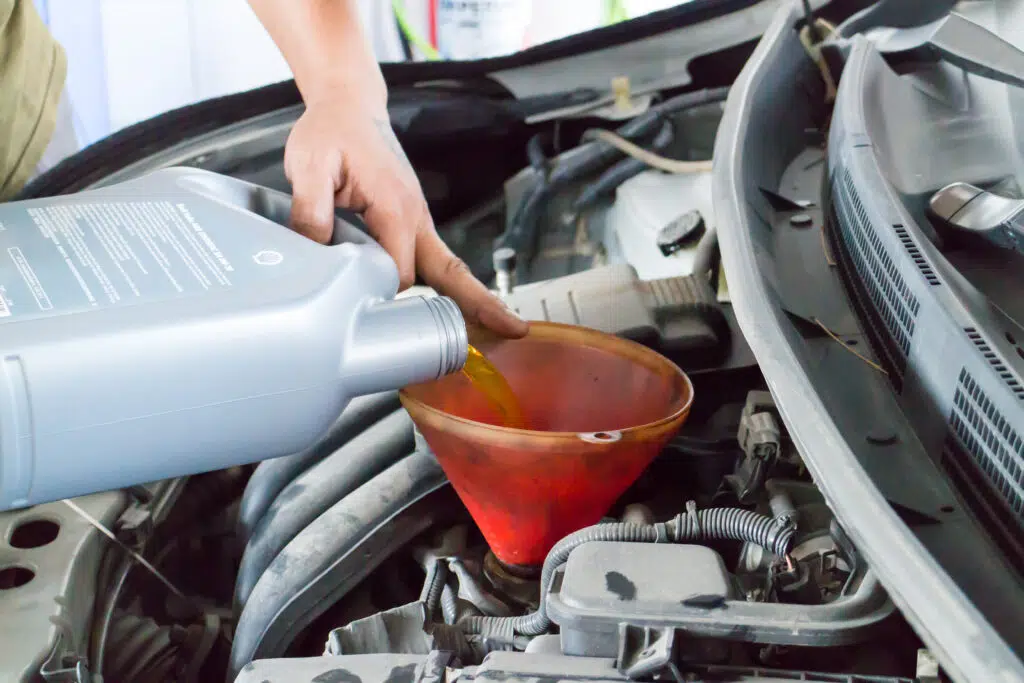When you own a car, it comes with the responsibility of maintaining it. Handling some of the basics yourself can help you save money on repair costs, ensuring that your vehicle remains in the best condition. These DIY car maintenance tips will help you keep your car on the road and running smoothly.
1. Check Your Oil Regularly

It’s crucial to check your engine oil on a regular basis. The oil in your car keeps your engine lubricated and reduces friction, preventing overheating and wear. You should check your oil once a month to help you catch low oil levels before they become a problem. Ultimately, keeping an eye on your oil levels will help you avoid severe engine damage and costly repairs.
2. Keep Your Tires Properly Inflated

Your tires have a bigger impact on your car’s overall safety and fuel efficiency than you’d think. If your tires are under-inflated, it can increase the risk of a blowout. Like your oil, you should be checking your tire pressure once a month as temperature changes can impact your tire pressure. It’s also a good idea to rotate your tires every 5,000 to 7,000 miles.
3. Replace Windshield Wipers

Maintaining your windshield wipers is important for safe driving and clear visibility. Wiper blades can become cracked or ineffective, which leads to streaks on your windshield when you use them. Thankfully, this is a really easy thing to DIY. Regularly replacing the wipers will help you avoid poor visibility and will improve your safety on the road.
4. Change Air Filters

It’s incredibly important to change your air filters. They impact the overall performance of your vehicle and a dirty filter could even potentially damage your engine if left unattended for long enough. You should check your air filter every 12,000 to 15,000 miles. Keeping it clean will help you improve your engine performance.
5. Inspect and Replace Spark Plugs

Spark plugs are another part of your car that experiences wear and tear. If they are worn, it will impact your car’s performance and could even stop it from starting. Taking a look at them every 30,000 miles or so will help you stay on top of them so you don’t wind up stranded or having problems. Keeping your spark plugs in good condition ensures a smoother, more efficient ride.
6. Check Battery Health

Your battery is another essential part of your car that is easy for you to check up on. Make sure to take a look at it and ensure there is no corrosion happening. You can use a brush to clean it off and tighten any loose connections. Also, batteries that are three years old or older should be tested, especially before winter. A healthy battery ensures your car starts reliably and reduces the chance of being stranded.
7. Flush the Coolant System

Coolant helps ensure that your engine stays at the right temperature. It should be flushed every 30,000 miles or so. Having old coolant in your car can corrode your radiator and other key components, leading to expensive repairs. You can drain the old coolant yourself and flush it out with water, refilling it with a 50/50 mix of coolant and water. Maintaining the coolant system will save you from costly headaches down the road.
8. Keep Brake Pads in Check

Your vehicle’s brakes play a key role in the car’s overall safety. Having worn brake pads can pose a safety risk if it is left unchecked. Inspect your brake pads every six months and listen for tell-tale signs of brake trouble like squealing or grinding noises. Don’t wait if you notice signs of worn brakes.
9. Test Your Lights

Headlights, brake lights, and turn signals can all go out without notice. So, it’s important to test your lights on a monthly basis. Replacing bulbs is a simple fix for the most part and keeping your lights functional will keep you safe on the road. Not to mention, it will help you avoid potential fines for non-working lights. Regular checks keep you visible and safe on the road.
10. Maintain Your Car’s Exterior

Another important part of car maintenance is inspecting the exterior of your vehicle. This will help you prevent rust and corrosion. Take the time to wax your vehicle every few months to help protect the paint. Not only will this keep your car looking great, but it will protect it from the elements. A little effort goes a long way in maintaining your car’s appearance and value.
Stay Ahead with Regular DIY Maintenance

The importance of regular maintenance cannot be overstated when it comes to your car. Performing these simple tasks can help you avoid breakdowns and costly repairs. Taking the time to look your car over and ensure it has everything it needs can make a huge difference in how your vehicle runs. DIY car care is an investment in your vehicle’s future and your wallet.